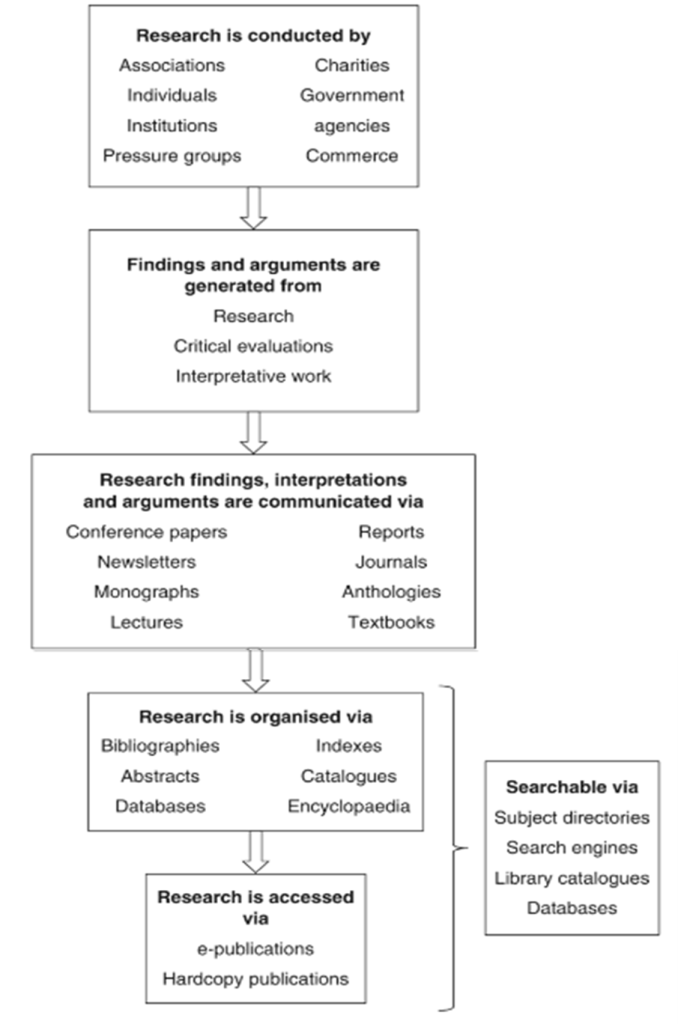Literature Review: why and how?


I was a Purchasing and Logistics Engineering student at Jamk until December 2022. My experience here as a student will always be something that I will cherish forever. Now coming to the practicality of the degree program, for my degree program, it is a must to carry out research and publish a thesis. The university prepares you by teaching you extensive courses on research and development. Then the supervisor, co-supervisor, and the language center support you to successfully plan, write and publish the thesis with rigorous feedback, meetings, suggestions, and, most importantly step-by-step implementation process.
You can find some company willing to give you a problem, situation, or challenge that needs to be solved as your thesis topic. Otherwise, you can come up with some research ideas to work on. The degree program and the teachers will guide you in both cases. In my case, I chose the second option. My thesis was focused on supply chain practices, and the type of research required a great amount of literature review (Faruque, 2022). The literature review directly aided in accomplishing some of the research objectives, while the other objectives were also partly influenced by it (Faruque, 2022). I will attempt to explain the definition, purpose, types, and steps of doing a literature review and hope it may help many students.
1.1 Definition and Purpose
An unbiased, thorough, and critical review of relevant and available research and non-research material on a topic can be referred to as a ‘literature review’ (Hart, 2018). According to Levy and Ellis (2006), a literature review aims to collect, comprehend, use, evaluate, summarize, and assess good-quality literature to build a strong basis for a theme and research methodology.
Furthermore, a literature review aims to enlighten the researcher on the most recent data on the subject and build the framework for other tasks, such as constructing the argument or justification for selecting the topic for future investigations (Cronin et al., 2008).
I believe the goal of the literature review is extensive and crucial in academic research. The following list includes some of the essential purposes:
- To ensure that the research subject is original and that there is a demand for such a study
- To comprehend how much about the issue has previously been established
- To develop a strong conceptual and theoretical foundation for the study
- To validate a particular research method or strategy by understanding which methods are successful or unsuccessful for similar projects
- To evaluate, correlate and compare own observations and suggestions with results from other research
- To have a comprehensive understanding of the subject to establish the study’s validity (Faruque, 2022).
1.2 Qualities of Literature Review
Now that we know how professionals have defined the literature review, it is also important to maintain the qualities of an effective literature review. Levy and Ellis (2006) have helped us in this matter too:
- Choose high-quality and relevant literature to review methodologically
- The review has to assist in creating a strong justification for choosing the research topic
- The review has to provide a clear understanding of the identification of a study methodology
- The review must compare the available research and demonstrate how the research idea advances the field of study by making an original contribution or by creating new opportunities.
1.3 Adopting a Suitable Type of Literature Review
Literature reviews come in a variety of forms. Deciding which type you will follow is much easier when you know such types. I will explain four main types of literature review that I gathered from Cronin et al. (2008):
- Traditional or Narrative: This review format summarizes, analyzes, and offers suggestions based on collected literature. Such a review assists in gathering, compiling, analyzing, and summarizing a huge amount of literature (Cronin et al., 2008).
- Systematic: Compared to traditional or narrative reviews, systematic reviews use a more well-defined technique to examine the literature (Cronin et al., 2008). Such a method can be used for selecting the study limitations, choosing a review timeframe or period (according to the publication dates of the literature (Parahoo, 2006), solving research questions with a specialized focus (Cronin et al., 2008), etc.
- Meta-Analysis: Meta-analysis applies statistical analysis over a significant collection of quantitative data to improve understanding of the subject (Cronin et al., 2008). It facilitates drawing conclusions, identifying trends and patterns, and connecting results (Polit & Beck, 2006).
- Meta-Synthesis: A non-statistical technique for integrating, evaluating, and interpreting the findings of several qualitative research activities is called meta-synthesis (Cronin et al., 2008). Analyzing and synthesizing are the key components of each study in such a literature review. In contrast to meta-analysis, which aims to reduce findings, Meta-synthesis transforms the data into unique concepts and interpretations (Faruque, 2022).
1.4 Steps of Conducting the Literature Review
There can be hundreds and thousands of ways of conducting a literature review, and there can be no right or wrong way. However, I took help from Levy and Ellis (2006), who described three steps of literature review through the figure below:

Figure 1: Steps of Literature Review
Source: adapted from (Levy & Ellis, 2006)
Step 1: Input
Setting strict search parameters and conducting thorough searches to gather pertinent, acceptable, and high-quality data are the inputs for a literature review approach. The garbage-in/garbage-out concept states that no matter how carefully the processing step is carried out, a systematic approach will fail if the input is incorrect, of poor quality, or irrelevant (Levy & Ellis, 2006). Finding excellent quality literature is important, but it is also important to discover their relevance with the research. To show the readers a comprehensive list of what to review and what not to, I am using the figure 2 that adapted was from Hart (2018).

Figure 2: What to review and where to find them
Source: adapted from (Hart, 2018)
Literature databases and electronic resources are excellent tools for exploring. Using electronic resources makes it much simpler to discover pertinent materials. JAMK offers a fantastic collection of resources that is available both physically and digitally. You can use excellent scientific databases such as ScienceDirect, JSTOR, ProQuest, SciFinder, ResearchGate, Semantic Scholar, SCRIBD, Elsevier, etc. Search engines like Google Scholar (and, of course, Google itself) can come in handy.
While searching for relevant documents, Keyword Search is a great way to save time when looking for relevant materials. It involves using a specific search term or phrase a part while searching in reliable scholarly databases (Levy & Ellis, 2006).
Two other excellent and quick ways of searching are Backward Search and Forward Search. Finding and examining the articles or references referenced in another article is a backward search. If the reader checks the sources mentioned in the first article, it is called second-level backward searching (Levy & Ellis, 2006). It is also known as Chain Searching (New Jersey Institute of Technology, 2022). A forward references search involves looking up a bunch of publications that cited the same publication (Levy & Ellis, 2006). I have done both, and they saved a lot of time and brought me good-quality materials to review.
Step 2: Processing
A typical processing of a literature review may include these six steps. Among these steps, a study’s success is significantly influenced by the synthesis and evaluation of the literature review. Of course, gathering important and applicable data and reporting are required. But, without adequate synthesis and evaluation, a study cannot come to its conclusion and provide suggestions. Let’s look at the six steps now:
- Processing begins with Knowing the Literature (Levy & Ellis, 2006). Activities like categorizing, classifying, explaining, and distinguishing are frequently used to reflect the level of knowledge (Faruque, 2022). The researcher must be able to analyze the material and extract significant, pertinent information from it.
- Then comes the next level of processing, i.e., Comprehending the Literature (Levy & Ellis, 2006). At this level, the researcher demonstrates that they have properly summarized the literature’s information and that they are aware of the significance of the data that has been provided. Activities like categorizing, classifying, explaining, and distinguishing are frequently used to reflect the level of comprehension (Levy & Ellis, 2006).
- Activities like presenting, illustrating, solving, connecting, and categorizing assist in illustrating the Application. The application can be made using a two-step process, such as determining the key ideas relevant to the study and arranging the reference in the appropriate category in the literature evaluation contexts (Levy & Ellis, 2006).
- Activities like sorting, combining, comparing, choosing, and explaining are examples of Analysis. The analysis essentially means determining why the information offered is significant (Levy & Ellis, 2006).
- Synthesis tries to produce a coherent unit of knowledge. It includes integrating, combining, modifying, rearranging, redesigning, composing, summarizing, and generalizing (Levy & Ellis, 2006).
- The evaluation comprises evaluating, selecting, recommending, deciding, outlining, contrasting, supporting, and concluding (Levy & Ellis, 2006). Recognizing the difference between the theories, opinions, and facts supported by empirical research is critical.
Step 3: Output
A literature review for academic purposes must be understandable, have a logical framework, and demonstrate that the author has attained the necessary knowledge, skills, and competencies. Hart (2018) explains that the output of a literature review indicates that the researcher collected the required skills, information, data, and competencies understandably and logically to carry out the research. The output should also reflect on the current scenario, challenges, and gaps, thus showing the new research’s justification.
1.5 Did I complete the literature review?
Every study has limitations and time constraints- so even if you are willing to continue reviewing more and more literature, it is logically not possible. The study proceeds forward when there is enough theory, evidence, data, and fact-checking in the pocket. It may take different times, approaches, or indicators to understand when to proceed forward for different studies. However, the literature review continues until the study is completed subtly or flamboyantly. Because you might need to change your methodology, redesign the steps or modify research questions or experience any other unexpected situation that you might need to solve with the help of a literature review again. Moreover, someone in some parts of the world is adding a little more information every day, so it is better to keep an eye on all the relevant and new information available.
Reference
Cronin, P., Ryan, F., & Coughlan, M. (2008). Undertaking a literature review: a step-by-step approach What is a literature review? British Journal of Nursing, 17(1), 38–43.
Faruque, B. (2022). Green and Lean Paradigm Shifts in Supply Chain Management A Literature Review-Based Approach [Bachelor’s Thesis, Jamk University of Applied Sciences, Finland] [Jamk University of Applied Sciences]. In Ammattikorkeakoulujen opinnäytetyöt ja julkaisut (Theses and publications of universities of applied sciences). http://urn.fi/URN:NBN:fi:amk-2022120526324
Hart, C. (2018). Doing a Literature Review (M. Steele, Ed.; 2nd ed.). SAGE Publication Ltd.
Levy, Y., & Ellis, T. J. (2006). A systems approach to conduct an effective literature review in support of information systems research. Informing Science Journal, 9, 181–211. https://doi.org/10.28945/479
New Jersey Institute of Technology. (2022, September 16). Literature Reviews: Searching and Chaining. Research Guides. https://researchguides.njit.edu/literaturereview
Parahoo, K. (2006). Nursing Research: Principles, Process and Issues. Second Edition. In G. Balint, B. Antala, C. Carty, J.-M. A. Mabieme, I. B. Amar, & A. Kaplanova (Eds.), Uniwersytet śląski (2nd ed.). Palgrave Macmillan. https://books.google.com/books/about/Nursing_Research.html?hl=fi&id=x_rIQAAACAAJ
Polit, D. F., & Beck, C. T. (2006). Essentials of Nursing Research: Appraising Evidence for Nursing Practise methods, appraisal, and utilization (6th ed.). Lippincott Williams and Wilkins.